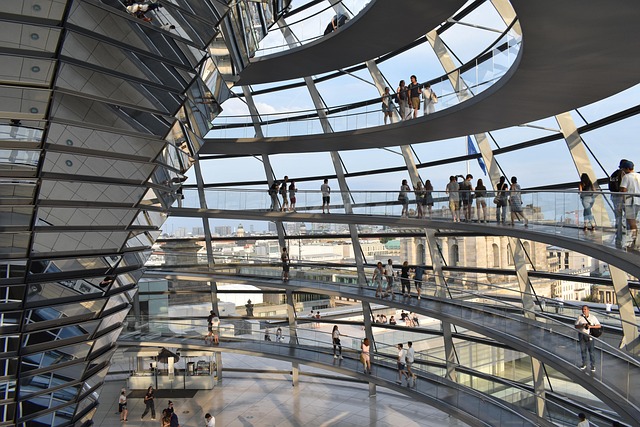In contemporary discourse, the notion of a glance—that fleeting, almost instinctive sweep across an object or experience—has become a bridge between the world of phenomenology and the laboratory of modern science. It is a translation that invites us to consider how a brief look or peek can unveil deeper structures of meaning, just as a scientist’s momentary observation can reveal a hidden pattern. The exploration that follows treats the glance not merely as a superficial glance, but as an entry point into the lived structure of consciousness that informs both philosophical insight and empirical inquiry.
Phenomenology’s Foundational Glance
Edmund Husserl’s foundational method of epoché or bracketing invites the researcher to take a deliberate glance at the contents of experience. In doing so, the thinker suspends judgment about the external world and focuses instead on the intentionality that constitutes perception. The glance, in this context, is more than a casual observation; it is a focused, mindful orientation toward the phenomenon itself, stripping away preconceived theories to reveal the pure structure of intentional acts.
- Intentionality: the directedness of consciousness toward objects.
- Epoché: suspension of natural attitude to clarify the phenomenon.
- Phenomenological reduction: the process of stripping away layers to reach essence.
The Epistemic Function of a Glance
A glance functions epistemically by offering a snapshot of a phenomenon’s immediate givenness. It is the epistemic “peek” that enables the philosopher to question underlying assumptions without becoming entangled in them. This act aligns with Husserl’s claim that knowledge begins with how things present themselves to consciousness, a claim that resonates with the scientific imperative of initial observation.
“To look at a phenomenon is to invite it into the light of consciousness, thereby rendering it intelligible.” – Husserl (paraphrased)
The Historical Evolution of the Glance
From the phenomenological school to the analytic tradition, the concept of a glance has evolved. Maurice Merleau-Ponty redefined it in terms of embodied perception, suggesting that the glance is not only a cognitive act but also a bodily one, rooted in the sensorimotor organization of the human subject. In the late twentieth century, phenomenologists such as Jean-Luc Marion introduced the idea of “saturated” phenomena—objects that give more than they receive—implying that a glance can both reveal and obscure.
Science’s Own Glances
Modern scientific practice shares a similar reliance on the glance. Whether a physicist examines a fleeting particle collision or an ecologist surveys a microhabitat, the initial glimpse is crucial. It shapes hypotheses, informs methodological choices, and frames the entire research agenda. The scientific glance is thus a counterpart to the phenomenological one: both seek to uncover hidden layers through a concise, often non-analytical act of observation.
- Hypothesis generation: initial data sparks theoretical speculation.
- Experimental design: the glance informs the setup of apparatus and variables.
- Data interpretation: a brief look at results can highlight patterns worth deeper investigation.
Methodological Implications of the Glance
Recognizing the glance as a methodological tool invites a dialogue between the sciences and phenomenology. In phenomenological research, the glance can be formalized through “phenomenological bracketing,” a disciplined way of approaching empirical data. Scientists, meanwhile, can benefit from a phenomenological mindset that encourages reflexivity about how their own perceptual biases shape the observation.
- Reflexive observation: acknowledging the observer’s influence.
- Embodied cognition: considering the role of the body in data acquisition.
- Iterative glance: repeatedly revisiting initial observations to refine understanding.
Case Study: Quantum Entanglement
In quantum mechanics, the paradox of entanglement can be illuminated by the phenomenological notion of a glance. The act of measuring one particle instantly informs the state of its distant twin, a phenomenon that challenges classical intuitions. A phenomenologist’s brief glance at the measurement process emphasizes the intentional structure of the observer’s act, offering a conceptual framework that complements the mathematical formalism.
Contemporary Debates and the Future of the Glance
Debate persists over whether the glance can be fully objective. Critics argue that every glance is colored by pre-existing theories and cultural contexts, thereby questioning the possibility of a pure, theory-free observation. Proponents of a phenomenological approach counter that by consciously bracketing assumptions, one can approximate an authentic glance that reveals the phenomenon’s inherent structure.
“Objectivity is not the absence of perspective but the disciplined use of it.” – Philosopher (paraphrased)
Integrating Glances in Interdisciplinary Research
Future interdisciplinary work may formalize the glance as a shared methodological practice. For example, cognitive scientists and philosophers could jointly design experimental protocols that emphasize initial perceptual episodes, thereby uncovering the embodied dynamics of attention and interpretation. This collaborative glance would not only enrich data collection but also foster a deeper understanding of how meaning is co-constituted across disciplines.
Conclusion: The Glance as a Point of Convergence
Ultimately, the glance—this brief, instinctive look—serves as a convergence point between phenomenology and modern science. It reminds us that both fields, though methodologically distinct, share a foundational respect for the immediacy of experience. By treating the glance as a rigorous, reflective practice, scholars can deepen the dialogue between the lived world and the empirical one, ensuring that each informs the other in a dynamic, ongoing exchange.


